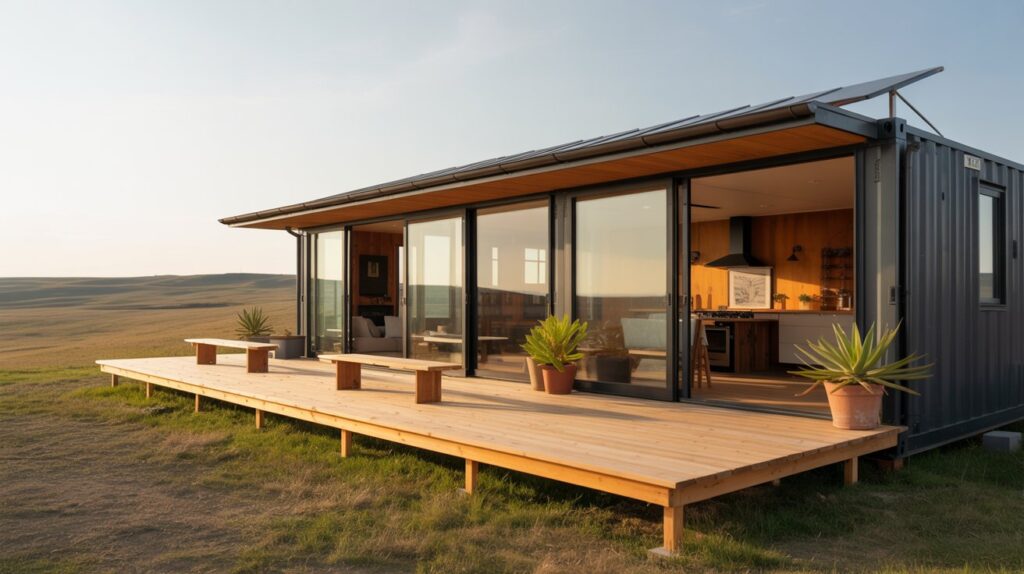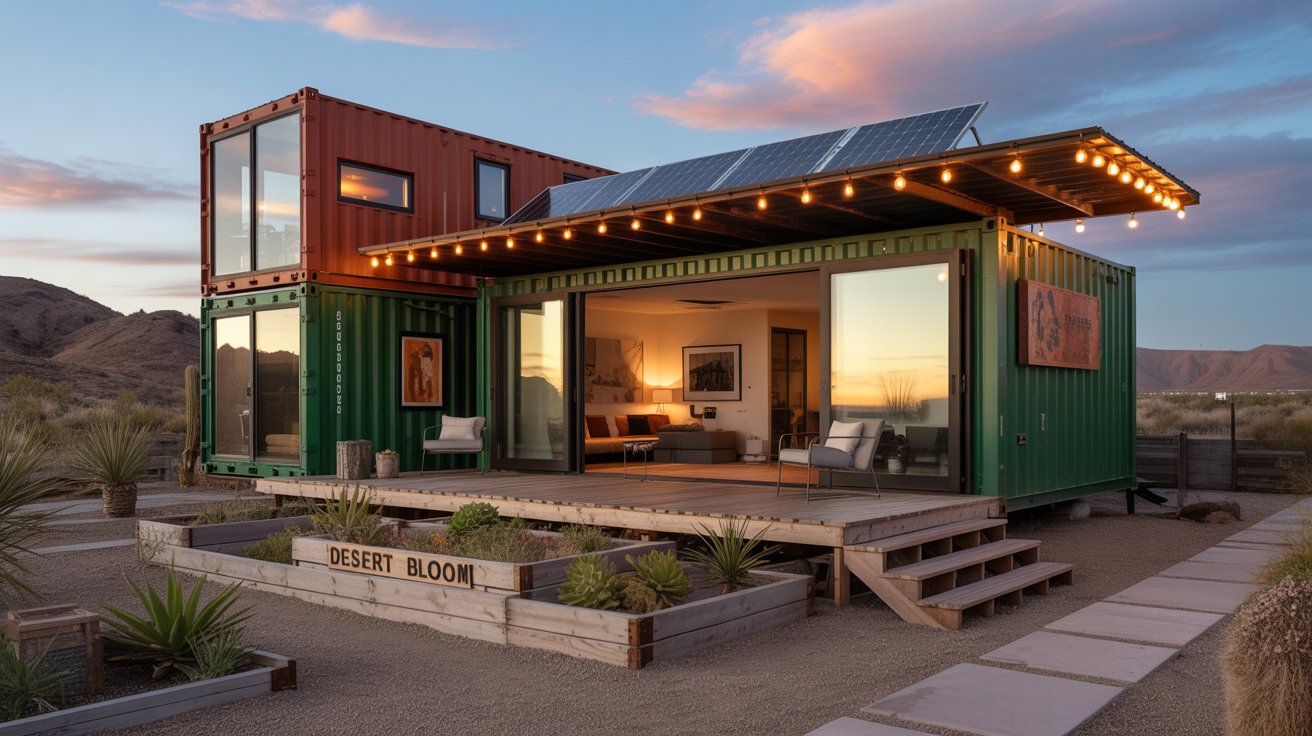Have you ever wondered about the durability of shipping container homes? As the trend of using repurposed shipping containers for housing continues to rise, you might be curious whether these metallic structures are built to last. Let’s explore the resilience and strength of shipping container homes, and answer the significant question: are they really durable enough to serve as a long-term living solution?

Understanding Shipping Container Homes
Shipping container homes are an innovative way to recycle industrial materials while providing affordable and unique housing solutions. These homes are constructed from steel cargo containers that were originally designed for shipping goods across water, rail, and road.
What Makes Shipping Containers an Attractive Housing Option?
One of the main appeals is their sustainability. By repurposing decommissioned containers, you’re reducing waste and conserving resources. Additionally, these homes are modular, meaning they can be stacked and arranged in various configurations to suit different spatial needs and design preferences.
Basic Structure and Design
Containers are made of high-strength corten steel—ideal for withstanding the harsh marine environments. This material offers excellent protection against the elements, making it a solid foundation for any housing structure. Two container sizes are most commonly used: 20-foot and 40-foot containers, each providing different amounts of living space once converted.
Durability of Materials
When considering the durability of shipping container homes, the materials used play a significant role. Shipping containers are built to endure the lives they live on the seas, facing saltwater, wind, and the heavy usage of loading and unloading.
Steel Strength
Containers are typically constructed from a specific type of steel known as weathering steel or corten steel, which forms a stable rust-like appearance after exposure to the weather. This protective layer prevents deeper corrosion, effectively increasing the container’s longevity.
Resistant to Environmental Factors
The design and materials used in shipping containers make them resilient in various environments. They’re crafted to withstand significant temperature fluctuations, severe weather, and physical wear, which provides a durable core structure for your home.
Common Concerns About Durability
Despite their strength, there are some common concerns worth considering when it comes to the durability of shipping container homes.
Rust and Corrosion
While corten steel does protect against deep rust, improper maintenance or environmental conditions can lead to corrosion. Containers situated in excessively humid environments might require additional treatment to prevent rust.
Modifications and Their Impact
Cutting and welding required for the installation of windows, doors, and other features can compromise the structural integrity. To mitigate this, proper reinforcement is essential. Skilled labor tends to reinforce key areas to maintain or even increase the container’s original strength.
Making Your Shipping Container Home Last
Ensuring the longevity of your shipping container home requires mindfulness during construction and ongoing maintenance.
Quality of Construction
It’s critical to employ skilled contractors familiar with container construction. They will ensure that cuts and reinforcements are properly executed. Furthermore, selecting high-quality components for insulation, roofing, and weather-proofing will help protect the core steel structure.
Maintenance Practices
Regular maintenance plays a vital part in extending the life of your container home. Regular inspections for rust, especially in corners and welded joints, should be part of your routine to ensure early treatment of any corrosion.

Comparing Durability: Container Homes vs. Traditional Homes
To truly assess the durability of shipping container homes, comparing them to traditional construction is helpful.
| Feature | Shipping Container Homes | Traditional Homes |
|---|---|---|
| Material Longevity | High due to steel construction | Variable depending on materials used |
| Resistance to Pests | High, steel is less susceptible to infestation | Moderate to high, depending on pest control |
| Suitability to Extreme Weather | Good with proper reinforcement | Generally good, but varies greatly |
| Energy Efficiency | Requires high-quality insulation for efficiency | Often designed with energy efficiency in mind |
Resilience in Extreme Conditions
Shipping container homes, with their compact and dense steel frame, often offer better resistance to earthquakes and heavy storms when adequately anchored. Traditional homes can match this durability, but tend to require more substantial engineering and materials.
Benefits Beyond Durability
While durability is a major factor, shipping container homes offer several other benefits, providing additional reasons why they are an attractive option.
Affordability
Containers are comparatively lower in cost, offering an affordable base for constructing a home. This aspect makes them a popular choice for those looking to reduce their upfront building costs.
Sustainability and Environmental Impact
The process of reusing containers reduces waste, which contributes positively to environmental conservation. Steel is also fully recyclable if the home is ever deconstructed, minimizing long-term environmental impact.
Customizability and Design Flexibility
The modular nature of containers allows for a high degree of creativity in design. They can be stacked and aligned in a variety of ways to create unique, modern, and efficient living spaces tailored to individual tastes.
Challenges You Might Face
It’s important to be aware of the challenges that can arise with shipping container homes, as addressing these can be critical to ensuring your container home’s durability.
Zoning and Building Regulations
Navigating local zoning laws and obtaining building permits can be more complex for container homes due to their non-traditional nature. It’s essential to consult local authorities early in the planning stages.
Insulation and Temperature Control
Steel can be a poor insulator, making it crucial to invest in high-quality insulation to ensure your home remains comfortable year-round. Improper insulation can lead to energy inefficiency and discomfort during extreme temperatures.
Interior Space Limitations
The relatively narrow width of a single container can result in limited interior space, necessitating creative design solutions to maximize usable area without sacrificing comfort.
The Case for Shipping Container Homes
After weighing the pros and cons, shipping container homes emerge as a viable alternative to traditional homes for those prioritizing sustainability, affordability, and speed of construction, as well as durability.
Ideal Scenarios for Shipping Container Homes
They are particularly well-suited for individuals or families looking to:
- Minimize environmental impact: The reuse of materials aligns with sustainable living principles.
- Live affordably: Due to lower material and construction costs compared to conventional homes.
- Achieve fast construction: The structural frame allows for quicker assembly times and potentially less construction hassle.
Conclusion
Shipping container homes, with proper construction and maintenance, can indeed be highly durable. Their durability, however, largely relies on factors such as the quality of materials used, the skill level of contractors, and ongoing maintenance. While they may not suit everyone’s needs, many find them an appealing alternative thanks to their strength, affordability, and eco-friendliness. By understanding both the strengths and the challenges, you can make an informed decision as to whether a shipping container home is right for you.

